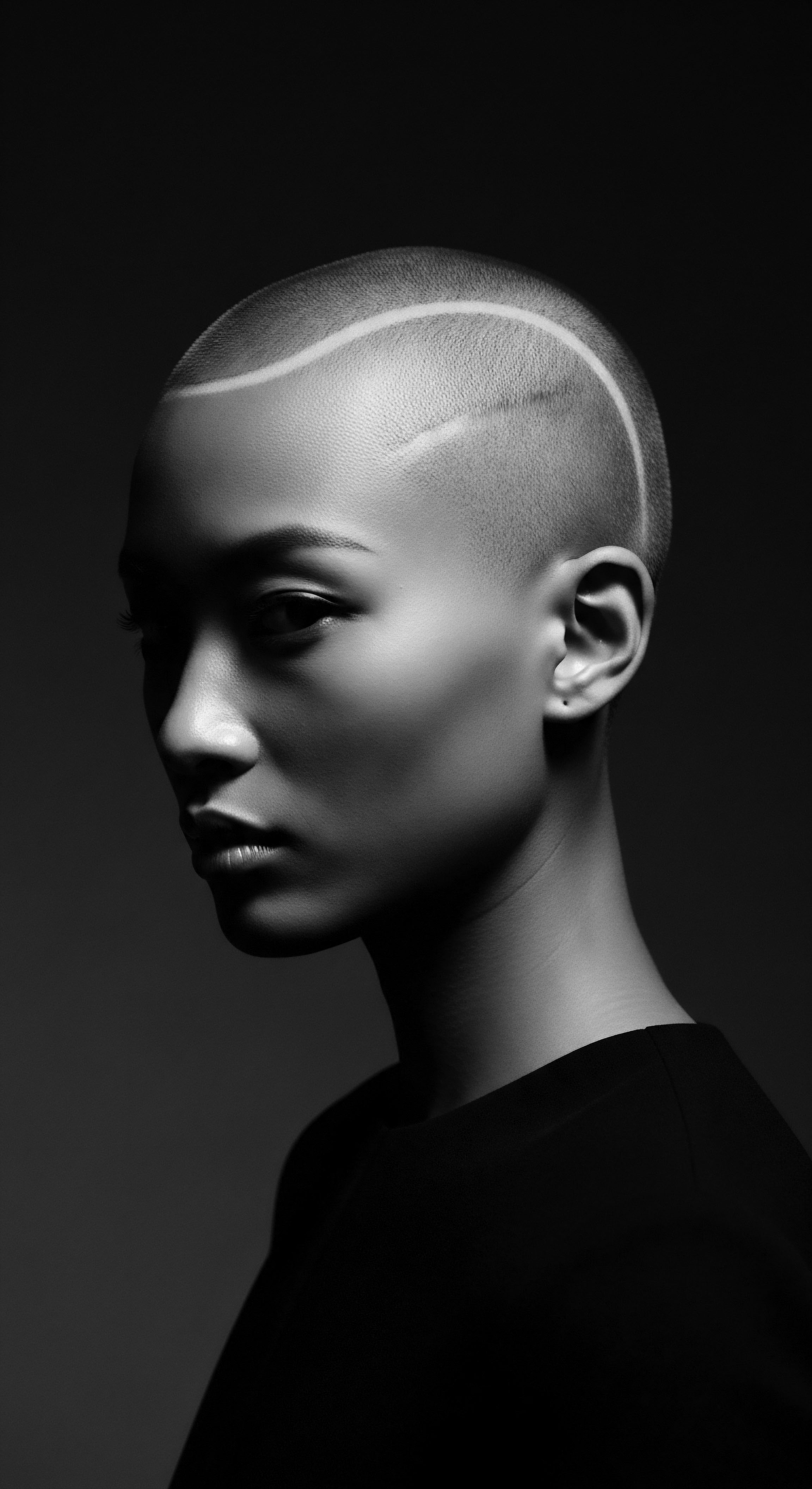
Fundamentals
The spirit of Roothea, a living archive of textured hair’s profound journey, invites us to consider the concept of Cultural Devaluation not as a mere academic abstraction, but as a lived experience etched into the very strands of our being. This phenomenon, at its elemental core, represents the systematic diminishing of worth attributed to specific cultural expressions, knowledge systems, and ways of life. When viewed through the lens of textured hair heritage, Cultural Devaluation speaks to the historical and ongoing disparagement of hair textures, styles, and ancestral care practices that originate from Black and mixed-race communities.
For centuries, the intricate beauty of coily, kinky, and curly hair, along with the rich traditions of its adornment and maintenance, faced an insidious assault. This assault stemmed from the imposition of alien beauty standards, often Eurocentric in their ideal, which positioned straight, fine hair as the epitome of acceptability and aesthetic grace. The inherent meaning of Cultural Devaluation, in this context, becomes clear ❉ it is the insidious process by which the dominant societal narrative seeks to erase or render invisible the inherent value of traditions not aligned with its own, compelling individuals to question the very authenticity of their inherited physical traits and cultural expressions.
Ancestral communities across the African continent held hair in sacred esteem, viewing it as a spiritual conduit, a marker of identity, status, and community affiliation. The explanation of Cultural Devaluation begins with the disruption of this reverence. As diasporic journeys unfolded, forced migrations brought forth a profound dislodgment from indigenous practices.
The meticulous braiding, the intricate coiling, the communal acts of cleansing and oiling—all became targets of scorn within new, oppressive societal structures. This initial rupture laid the groundwork for generations of internalized struggle.

Echoes from the Source ❉ Ancestral Hair as a Sacred Map
Before the shadows of devaluation stretched across the globe, hair served as a vibrant, living testament to identity within countless African societies. It was not merely an appendage; it was a profound aspect of one’s spiritual and social fabric. Hair styles communicated marital status, age, lineage, and even one’s role within the community.
The delineation of these ancient practices reveals a deep symbiosis between personal expression and collective identity. For example, specific braiding patterns might signify a woman’s readiness for marriage, or a warrior’s triumphs in battle.
Cultural Devaluation, in the context of textured hair, is the historical discrediting of ancestral beauty practices and natural hair forms, compelling a re-evaluation of inherited self-worth.
The ingredients used in ancient hair care were often sourced from the earth, imbued with a deep understanding of botanical properties and their healing capacities. From shea butter to various plant extracts, these natural elements were not just conditioners; they were elixirs, connecting the individual to the land and the wisdom passed down through oral traditions. The devaluation that followed sought to dismantle this intricate web of knowledge, pushing aside the efficacy of these time-honored remedies in favor of practices that promised an illusory conformity.
- Historical Disruption ❉ The forced displacement of African peoples severed direct ties to ancestral lands and the communal practices of hair care.
- Imposition of Standards ❉ Eurocentric beauty ideals were systematically elevated, portraying natural Black hair as unruly or unprofessional.
- Loss of Knowledge ❉ Oral traditions and the specific designation of herbal remedies for textured hair faced suppression, diminishing their perceived value.
- Internalized Perceptions ❉ Generations began to view their natural hair as “bad” or requiring “taming,” reflecting the external societal judgment.

Intermediate
Moving beyond the foundational understanding, the intermediate comprehension of Cultural Devaluation within textured hair heritage unveils a more intricate interplay of societal forces and personal experiences. This phenomenon extends beyond mere aesthetic preference, embedding itself within the very structures of social acceptance, economic opportunity, and psychological well-being. The clarification here involves recognizing how the devaluation was not a passive occurrence but an active, perpetuated system that conditioned individuals to internalize negative perceptions about their hair.
The concept of “good hair” versus “bad hair” became a deeply ingrained lexicon within Black and mixed-race communities, a painful manifestation of this cultural diminishing. “Good hair” often referred to looser curl patterns or straighter textures, closer to European hair types, while “bad hair” was a descriptor for kinky, coily, or highly textured hair. This internalized hierarchy, a direct consequence of systemic devaluation, created divisions and perpetuated a cycle of self-rejection. The significance of this dichotomy cannot be overstated; it dictated social mobility, perceived beauty, and even self-esteem for countless individuals.
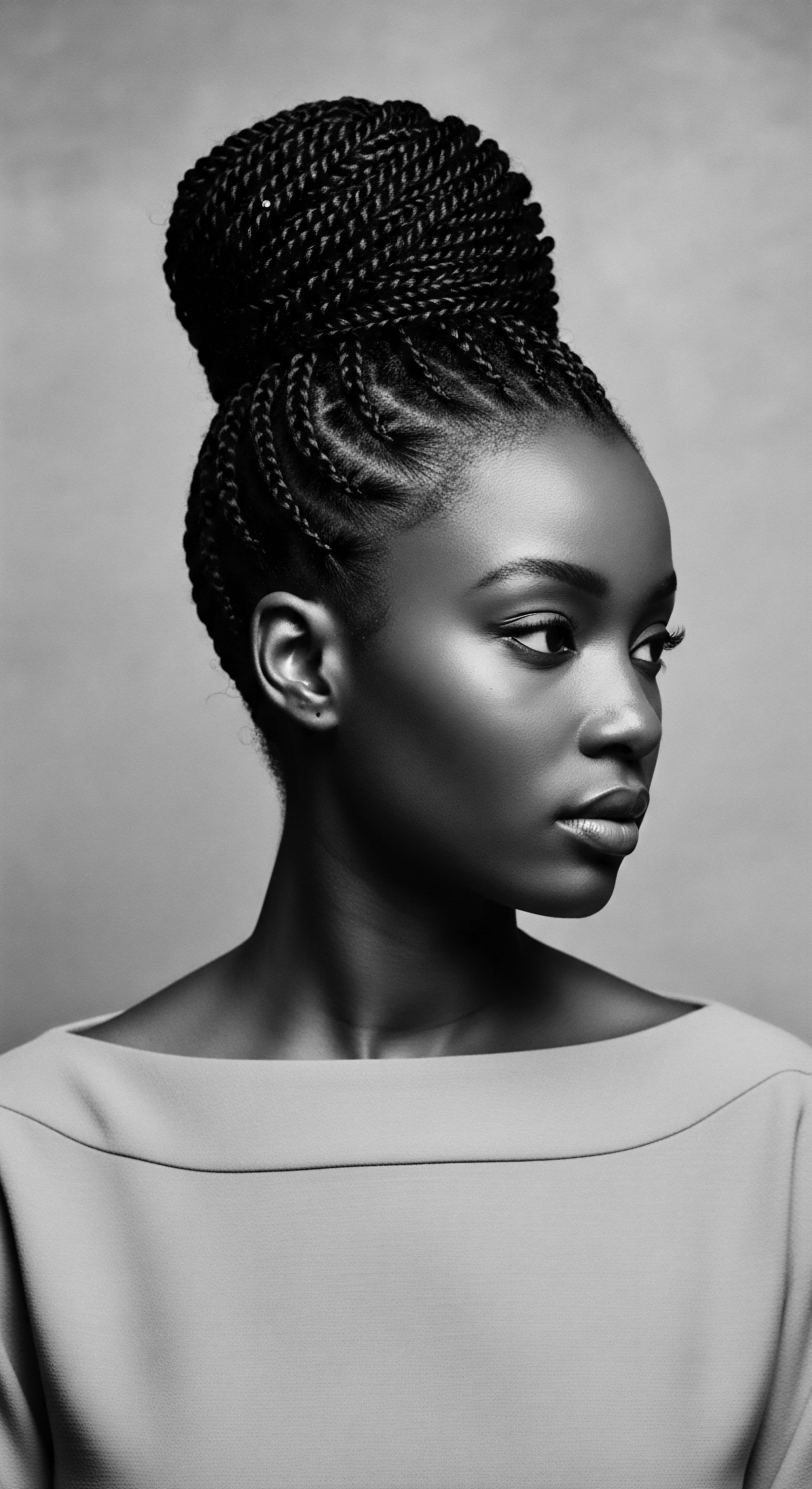
The Tender Thread ❉ Navigating Imposed Ideals
The pervasive influence of media, advertising, and institutional policies played a considerable role in solidifying these devaluing perceptions. Images presented in mainstream media rarely celebrated the diversity of textured hair, instead promoting a singular, often unattainable, ideal. This visual scarcity of positive representation contributed to the collective belief that natural hair was not beautiful or worthy of public display. Hair care products, too, became tools of this devaluation, heavily marketing chemical straighteners and relaxers as the primary means to achieve societal acceptance, often at the expense of hair health and ancestral wisdom.
The choice to alter one’s hair, to chemically straighten or thermally press it, became a complex decision, often driven not by personal preference alone, but by a perceived necessity for social and professional advancement. This created a profound tension between honoring one’s inherited identity and navigating a world that penalized authentic expression. The weight of these expectations placed a silent burden upon generations, shaping daily rituals and long-term aspirations.
The insidious “good hair” versus “bad hair” narrative, a direct consequence of Cultural Devaluation, created profound internal and external struggles within communities of color.
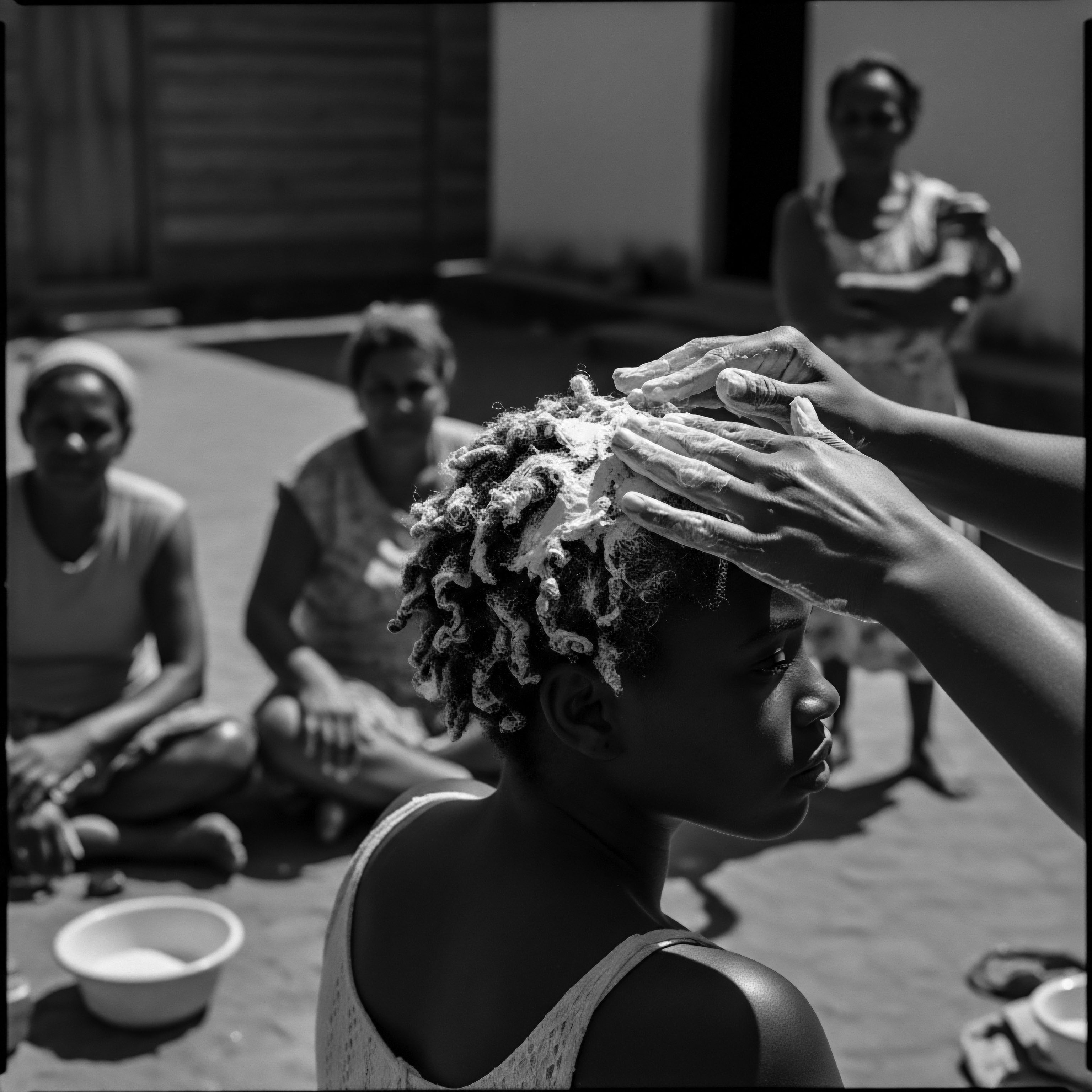
Societal Expectations and Hair Alteration
The pursuit of straight hair was not simply a trend; it was a survival tactic in many instances. Black women, in particular, often faced explicit and implicit biases in educational and professional settings where natural hair was deemed “unprofessional” or “unkempt.” This systemic pressure forced many to choose between their natural hair and their career aspirations, a choice that underscored the deep roots of Cultural Devaluation. The very purport of professional grooming guidelines, when applied without cultural understanding, became a mechanism for discrimination.
Consider the shift in hair care products over time. Ancestral practices involved natural oils, herbs, and meticulous manual techniques passed down through families. The advent of chemical relaxers, while offering a pathway to conformity, also introduced harsh chemicals that often caused damage to the scalp and hair. This shift reflects a broader pattern of cultural exchange that became imbalanced, where traditional, holistic approaches were sidelined for commercially driven solutions that reinforced devaluing standards.
| Historical Period Pre-Colonial Africa |
| Dominant Hair Care Philosophy Hair as Identity ❉ Communal care, natural ingredients, symbolic styles. |
| Connection to Cultural Devaluation Hair was a source of collective and individual strength, free from external devaluation. |
| Historical Period Slavery & Post-Emancipation |
| Dominant Hair Care Philosophy Hair as Conformity ❉ Emphasis on straightening, chemical relaxers, hot combs. |
| Connection to Cultural Devaluation Direct imposition of Eurocentric standards; natural hair equated with inferiority. |
| Historical Period Mid-20th Century (Civil Rights Era) |
| Dominant Hair Care Philosophy Hair as Protest ❉ Rise of the Afro, embracing natural textures as a political statement. |
| Connection to Cultural Devaluation Rejection of devaluation, assertion of Black identity and beauty. |
| Historical Period Late 20th – Early 21st Century |
| Dominant Hair Care Philosophy Hair as Choice/Reclamation ❉ Natural hair movement resurgence, diverse styles. |
| Connection to Cultural Devaluation Ongoing battle against residual devaluation, seeking systemic change and self-acceptance. |
| Historical Period This progression illustrates the continuous struggle against, and reclamation from, the forces of Cultural Devaluation. |

Academic
The academic definition of Cultural Devaluation, particularly within the domain of textured hair heritage, delineates a systemic process by which a dominant cultural group imposes its aesthetic and social norms, thereby diminishing the perceived worth and validity of practices, features, and identities belonging to marginalized groups. This is not a passive occurrence but an active, often institutionalized, perpetuation of bias that extends its reach into psychological, social, and economic spheres. It represents a form of symbolic violence, where the cultural artifacts and expressions of one group are rendered inferior, unkempt, or unprofessional, necessitating their alteration or concealment for social acceptance and mobility. The substance of this devaluation lies in its power to shape self-perception and limit opportunities, transforming a physical trait into a barrier.
From an academic perspective, Cultural Devaluation in the context of Black and mixed-race hair experiences can be understood as a direct descendant of colonial and post-colonial power dynamics. During periods of enslavement and subsequent racial oppression, the indigenous hair practices and aesthetic values of African peoples were systematically stripped of their reverence and replaced with Eurocentric ideals. This historical subjugation led to the pervasive belief that natural Afro-textured hair was “bad” or “unmanageable,” a notion that permeated societal institutions, including education, employment, and media representation. The essence of this historical imposition continues to cast long shadows, shaping contemporary experiences of hair discrimination.
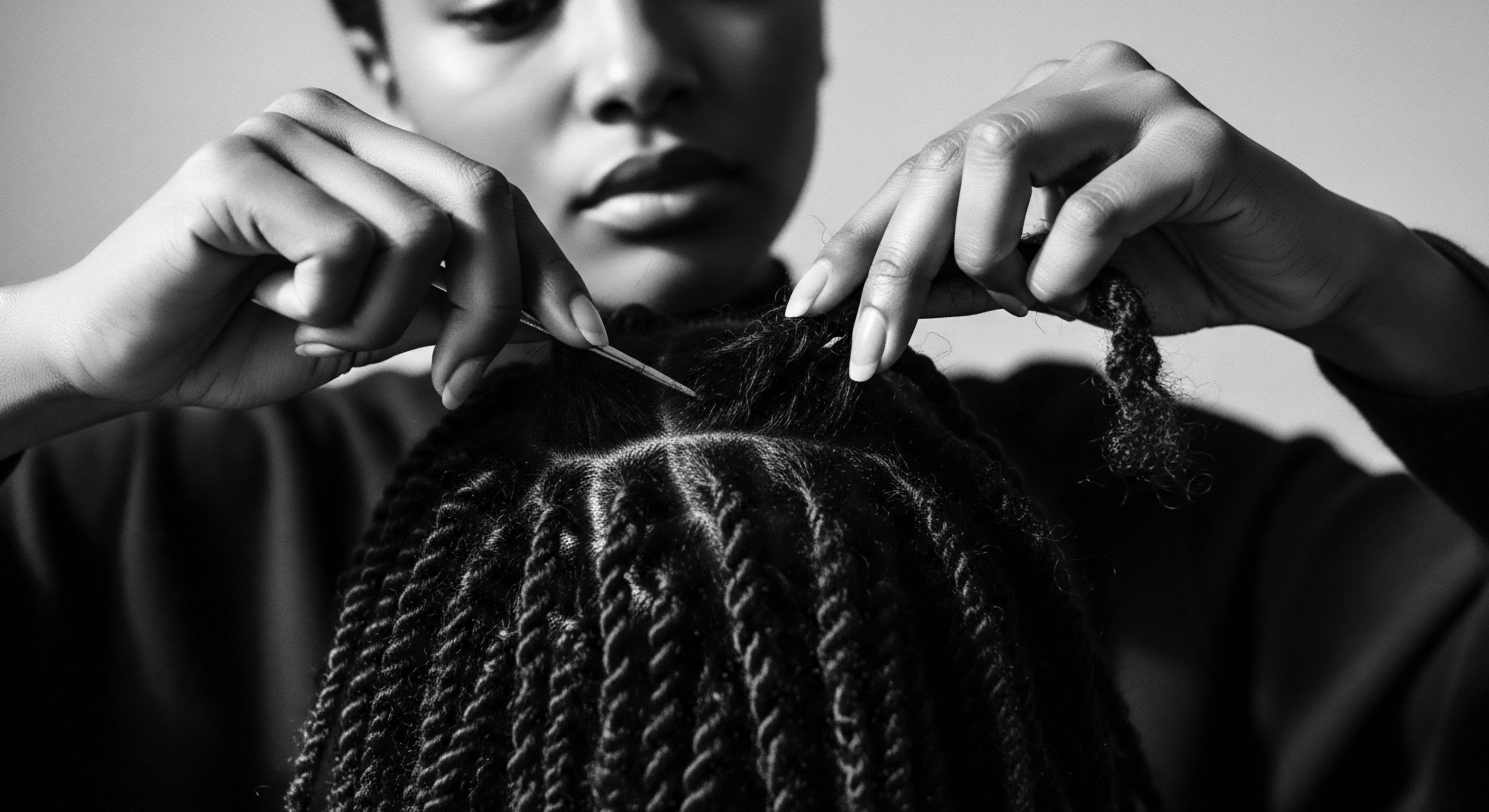
The Unbound Helix ❉ Empirical Evidence of Systemic Devaluation
Rigorous research consistently substantiates the tangible impacts of this devaluation. A compelling illustration arises from the study conducted by Ashleigh Shelby Rosette and Christy Zhou Koval (2020), which provided empirical evidence of bias against natural Black hairstyles in job recruitment. Their findings, published in Social Psychological and Personality Science, revealed that Black women with natural hairstyles, such as curly afros, braids, or twists, were perceived as less professional and less competent, and consequently, were less likely to be recommended for interviews compared to Black women with straightened hair and White women with either straight or curly hair. This study underscores how deep-seated societal biases, rooted in historical devaluation, translate into concrete disadvantages in the labor market.
The implications of Rosette and Koval’s (2020) work extend far beyond mere perception. They highlight a systemic barrier to economic advancement and social inclusion. When an individual’s natural hair, an inherited trait deeply connected to their ancestral lineage, becomes a determinant of their professional viability, it exposes the profound injustice embedded within prevailing beauty and professional standards.
This phenomenon is not isolated to the workplace; similar patterns of discrimination have been documented in educational settings, where Black students, particularly girls, face disciplinary actions or exclusion for wearing culturally significant styles like locs or braids. The connotation of “professionalism” itself becomes a tool for upholding exclusionary norms.
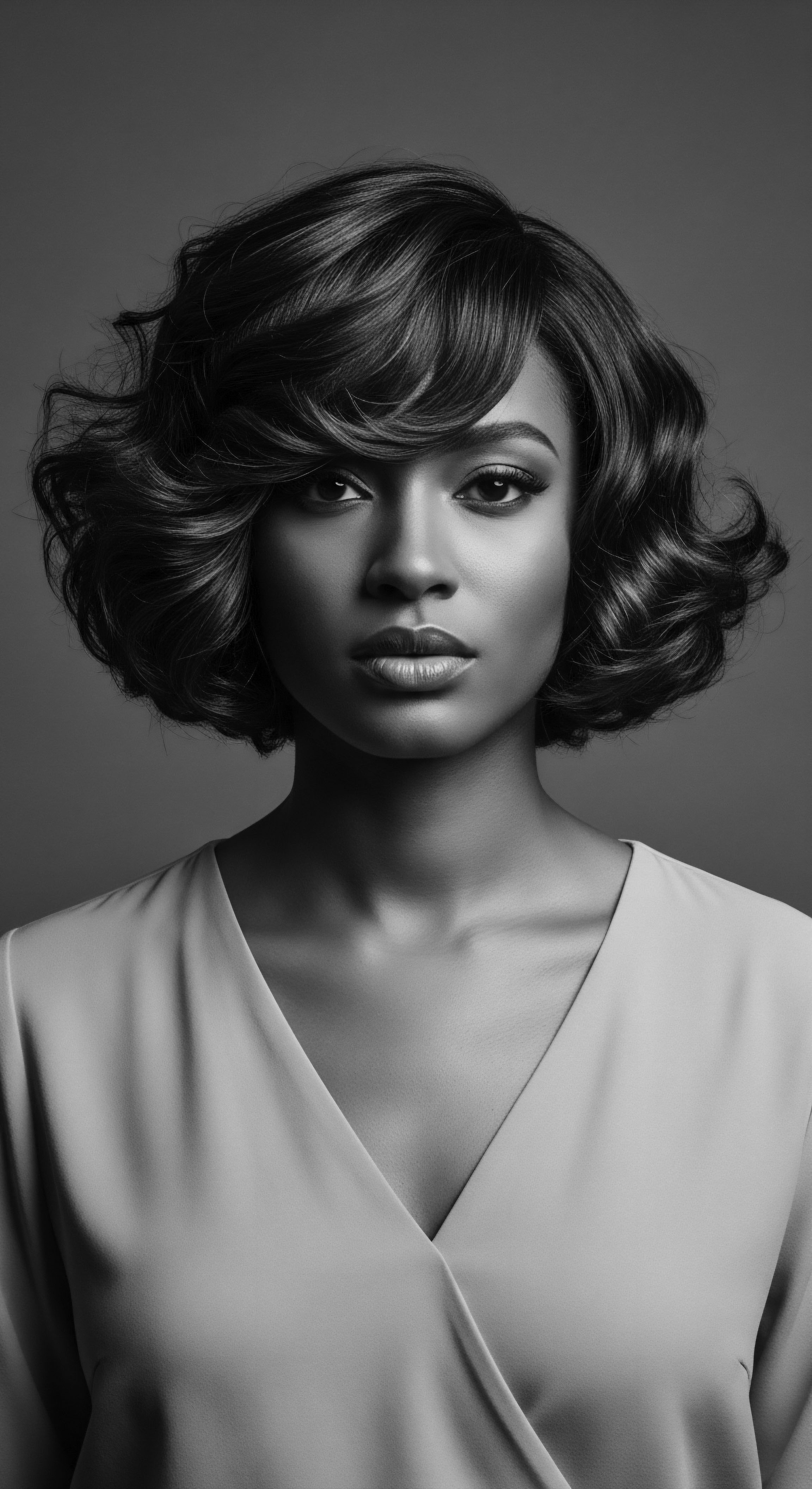
Psychological and Societal Ramifications
The long-term consequences of Cultural Devaluation on textured hair are multifaceted, impacting both individual psyche and collective well-being. Psychologically, the constant pressure to conform to an alien ideal can foster internalized racism, anxiety, and diminished self-esteem, especially among young Black girls who are socialized to view their natural hair as problematic. This psychological burden is compounded by the physical toll of chemical relaxers and heat styling, which can cause damage to the hair and scalp, sometimes leading to permanent hair loss.
Societally, Cultural Devaluation perpetuates a cycle of economic disparity. The multi-billion dollar Black hair care industry, while providing products for textured hair, has historically been dominated by companies that profited from promoting hair straightening and alteration, thereby reinforcing the very standards that devalued natural hair. Even as the natural hair movement gains momentum, the economic landscape continues to grapple with the legacy of these historical patterns. The import of understanding these dynamics lies in recognizing how market forces can inadvertently reinforce cultural biases.
Empirical research demonstrates that Cultural Devaluation of textured hair translates into tangible barriers, limiting educational and employment opportunities for Black individuals.
Moreover, the legal landscape reflects this ongoing struggle. Despite the passage of civil rights legislation, the specific protection against hair discrimination remains ambiguous in many jurisdictions, necessitating legislative efforts like the CROWN Act to explicitly prohibit such biases. This legal ambiguity itself speaks to the deeply entrenched nature of Cultural Devaluation, where a physical characteristic, inextricably linked to racial identity, is still not universally recognized as a protected attribute. The specification of these discriminatory practices within legal frameworks is a crucial step towards dismantling the legacy of devaluation.
The academic discourse also extends to the reclamation efforts, where understanding the historical context of devaluation becomes a powerful tool for empowerment. Scholars and advocates emphasize the importance of Afrocentricity and the embrace of natural hair as a political and cultural statement, challenging the imposed beauty standards and affirming the inherent beauty of diverse textures. This re-evaluation of ancestral practices, from traditional hair oiling to protective styles, becomes a conscious act of resistance against the historical diminishing of worth.
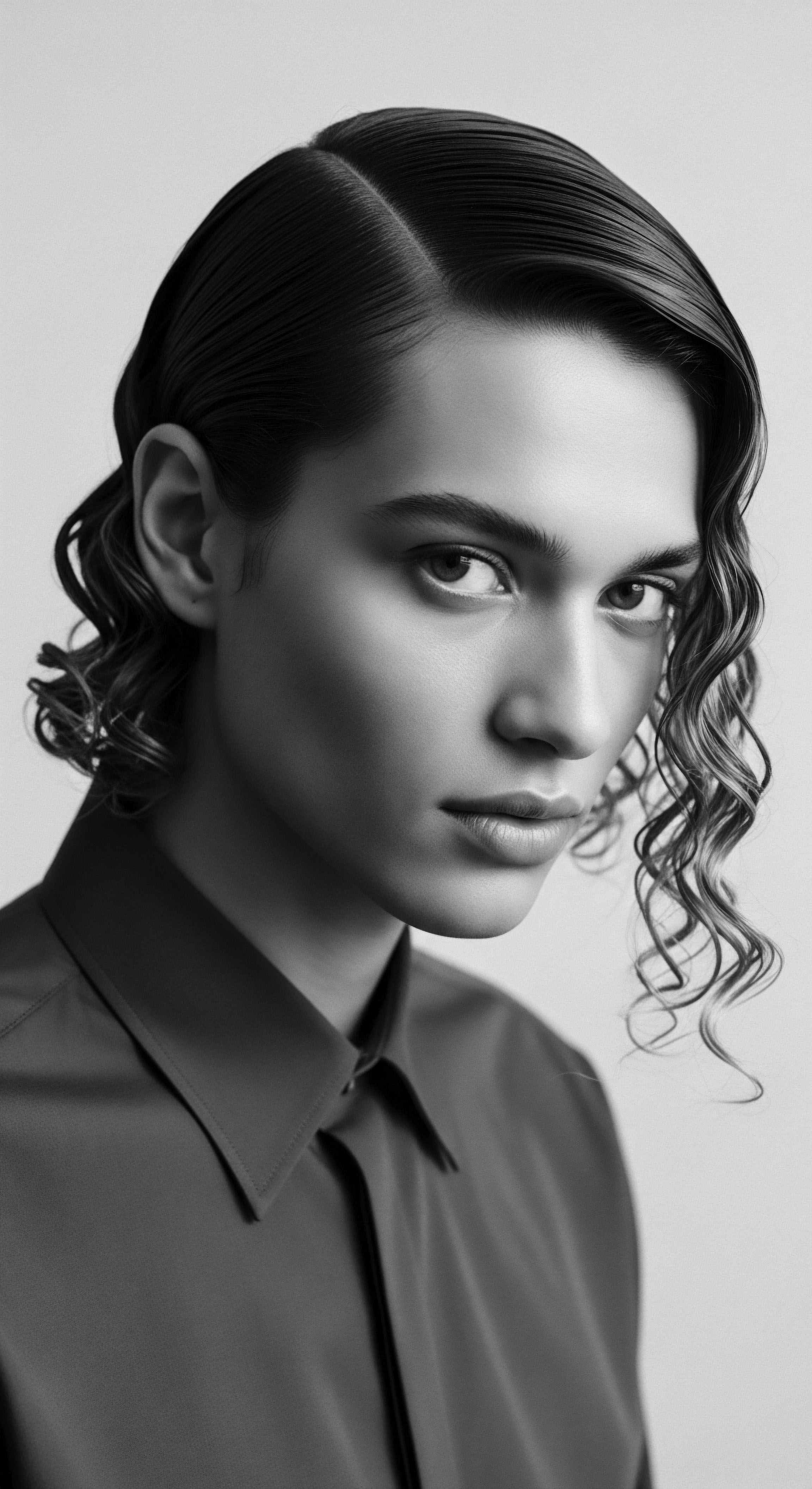
Ancestral Practices and Scientific Validation
A deeper elucidation of Cultural Devaluation reveals how it often dismisses ancestral knowledge that modern science later validates. For instance, traditional hair oiling practices, long revered in many African and South Asian communities for scalp health and hair strength, were often viewed as unsophisticated or “messy” within devaluing frameworks. Yet, contemporary trichology increasingly affirms the benefits of scalp massage and specific botanical oils for hair vitality. This convergence of ancient wisdom and modern scientific understanding underscores the profound loss incurred when cultural practices are dismissed without genuine inquiry.
The concept also intersects with studies on identity formation and resilience. For individuals of mixed heritage, the pressure to align with one dominant beauty standard over another can be particularly acute, leading to complex negotiations of self. Cultural Devaluation, in this context, forces a choice between perceived belonging and authentic expression, a choice that carries significant psychological weight. The designation of “mixed hair” as a separate category, often still judged against Eurocentric norms, further highlights the pervasive reach of this devaluation.
- Systemic Bias ❉ Cultural Devaluation is not individual prejudice but a pervasive societal mechanism affecting institutions.
- Psychological Impact ❉ Internalized negative perceptions, anxiety, and diminished self-esteem are common consequences.
- Economic Barriers ❉ Discrimination in employment and education limits opportunities for those embracing natural hair.
- Reclamation as Resistance ❉ The natural hair movement actively challenges and reclaims the narrative around textured hair.

Reflection on the Heritage of Cultural Devaluation
As we draw breath and gaze upon the rich tapestry of textured hair’s journey, the meaning of Cultural Devaluation reveals itself not as a static concept, but as a dynamic force that has shaped, and continues to shape, the very contours of identity. Roothea, as a living library, seeks to hold this history with reverence, acknowledging the pain of the past while celebrating the indomitable spirit of those who resisted the erasure of their ancestral beauty. The wisdom held within each coil, each curl, each braid, whispers stories of resilience, of adaptation, and of an unwavering commitment to self.
The tender thread of heritage, stretching from the communal hearths where hair was adorned with purpose and love, through eras of profound challenge, to the vibrant expressions of today, speaks to an unbroken lineage. Understanding Cultural Devaluation is not merely about dissecting historical injustices; it is about honoring the ancestral practices that persisted despite oppression, about recognizing the inherent scientific brilliance in traditional care rituals, and about affirming the profound connection between our hair and our holistic well-being.
Understanding Cultural Devaluation empowers us to reclaim ancestral wisdom, fostering a deeper appreciation for the enduring beauty and resilience of textured hair heritage.
The journey from elemental biology to the unbound helix of identity is one of constant rediscovery. Each conscious choice to celebrate one’s natural texture, each act of communal care, each voice raised against discrimination, contributes to the ongoing work of dismantling the lingering effects of devaluation. Roothea envisions a future where the inherent beauty of all textured hair is not merely tolerated, but deeply revered, where the ancient echoes of its sacredness resonate freely, guiding us towards a collective future of authenticity and profound self-acceptance. Our hair, truly, is a living legacy, carrying the wisdom of generations, a testament to enduring spirit.
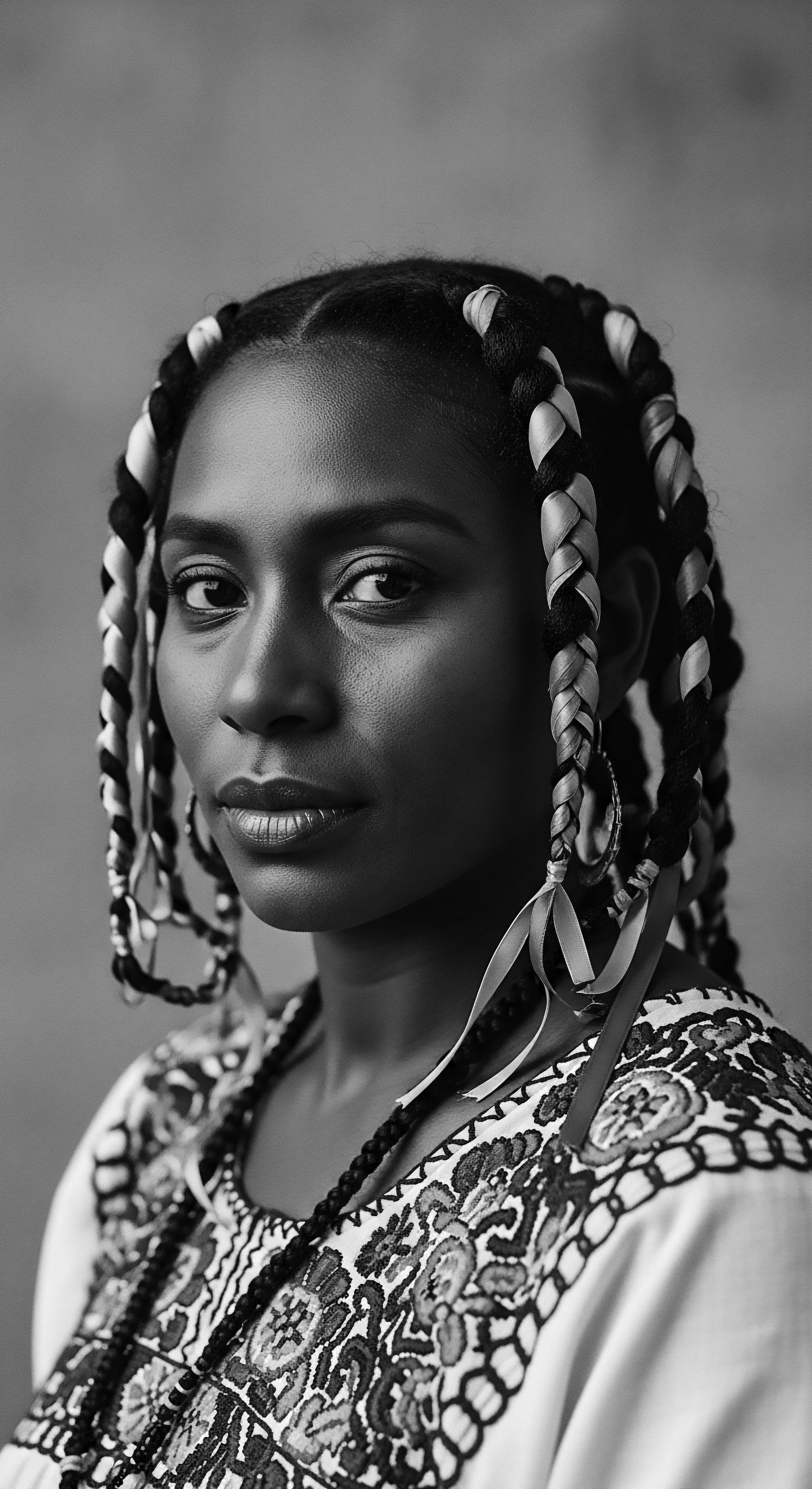
References
- Abdullah, A. S. (1998). The psychology of the African American ❉ A historical and contemporary perspective. Kendall Hunt Publishing.
- Arogundade, B. (2000). Black beauty. Pavilion.
- Banks, I. (2000). Hair ❉ A cultural history of African American hair. Harcourt Brace.
- Byrd, A. D. & Tharps, L. D. (2014). Hair story ❉ Untangling the roots of Black hair in America. St. Martin’s Griffin.
- Craig, M. L. (2006). Ain’t I a beauty queen? ❉ Black women, beauty, and the politics of identity. Oxford University Press.
- Gill, L. (2010). Beauty shop politics ❉ African American women’s activism in the beauty industry. University of Illinois Press.
- Patton, T. O. (2006). Hey girl, am I more than my hair? ❉ African American women and their hair. Peter Lang.
- Robinson, D. E. (2011). Hair as race ❉ Why “good hair” may be bad for Black females. Howard Journal of Communications, 22(4), 358–376.
- Rosette, A. S. & Koval, C. Z. (2020). The natural hair bias in job recruitment. Social Psychological and Personality Science, 11(5), 738-746.
- Thompson, C. (2009). Black women, beauty, and hair as a symbol of racial identity. The Ohio State University Press.
